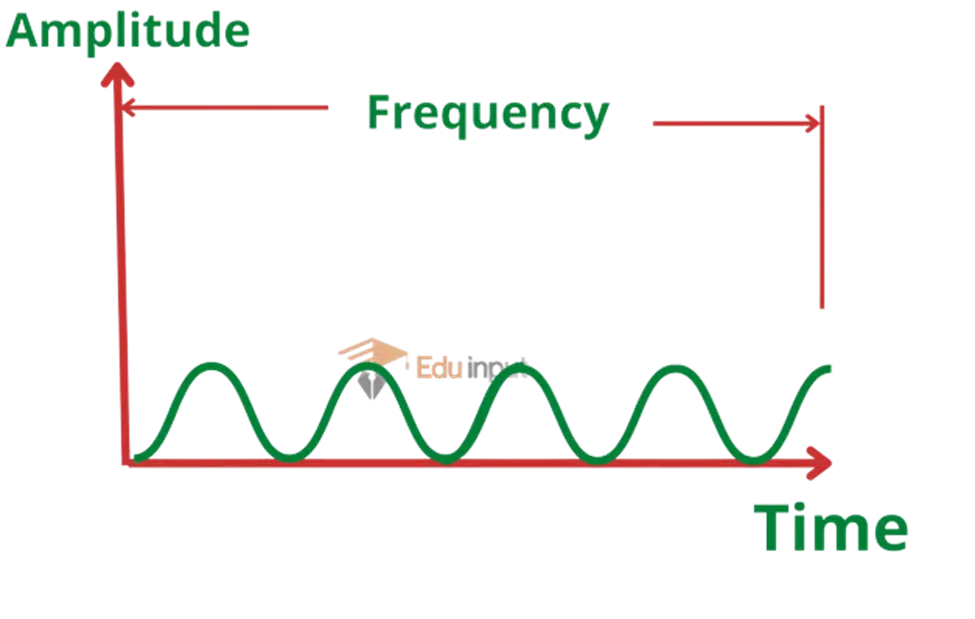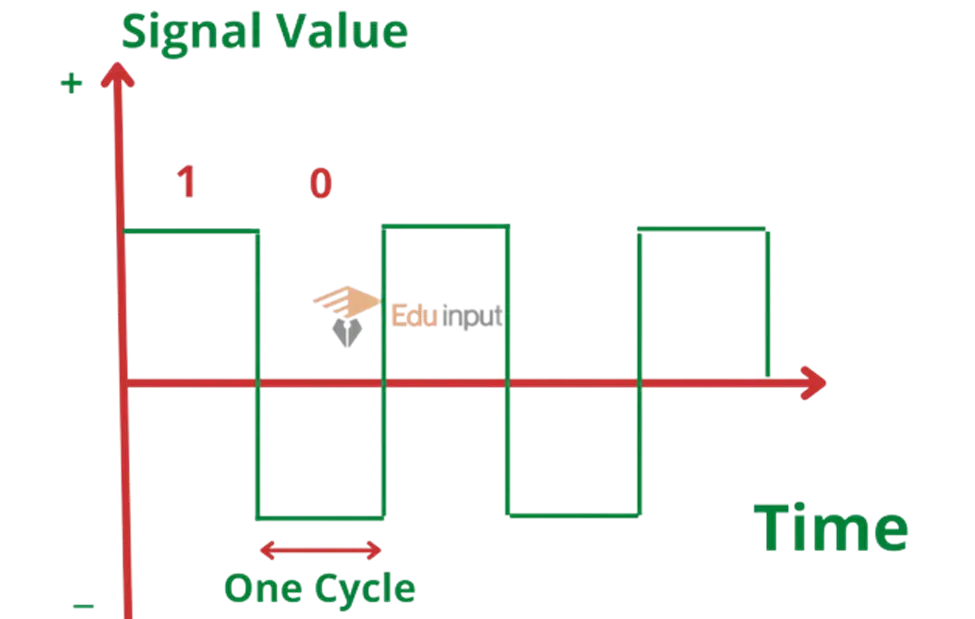Data Communication – Types, Components, Signals, and Encoding of Data
Data communication is the exchange of data between two devices via some form of transmission media such as a wire cable.
In other words, we can say that the transfer of information from one location to another is called data communication. The data can be transferred through the medium.

Key Points
| 1. Data communication is the exchange of data between two devices via transmission media. 2. The five components of data communication are message, sender, receiver, communication channels, and encoding/decoding. 3. Data can be represented as text, numeric data, images, audio, or video. 4. Computers represent data as binary numbers, with 0 representing no electrical pulse and 1 representing a pulse. 5. Encoding is the process of converting data into binary form. Types of coding schemes include BCD, EBCDIC, ASCII, Unicode, and others. |
Components of Data Communication
The five necessary models of data communication are as follows. Data communication is not possible without these components.
Message
The message is the data or information to be communicated.
It may consist of text, picture, audio, number, video, or any combination of these.
Sender
The sender is the device that sends the message. It is also called a source or transmitter.
It can be a computer, workstation, telephone, video camera, etc.
Receiver
The receiver is the device that receives the data. It is also called a sink.
It can be a computer, workstation, telephone, video camera, etc.
Communication Channels
The communication channel is the path that connects the sender and the receiver.
It is used to transmit data. The transmission media can be a physical cable or a wireless medium. it is also called the medium.
Encode and Decode
The encoder converts the digital signals to a form that can pass through a transmission medium (analog signal) and the decoder again converts the signal from the encoded form into digital form, which is understandable for the receiver.
Without them, two devices may be connected but not communicating, such as a student speaking Urdu who cannot understand a student who speaks only German without a translator.
Signals
The electromagnetic or light waves representing data are called signals.
These are used to transfer data from one device to another through a communication medium. Data communication signals can be in analog or digital forms.
Types of Signals
There are two types of signals for data communication
- Analog Signal
- Digital Signal
Analog Signals
An Analog signal is a continuous electrical signal in the form of a wave. This wave is known as a carrier wave. The telephone line is used media for the analog transmission of data. Sound, Radio, and microwave are also examples of analog signals.
Characteristics of Analog Signals
Frequency: The number of times a wave repeats during a specific time interval is known as frequency.
Amplitude: The height of a wave within a given period is known as amplitude.

Digital Signals
A Digital signal is a sequence of voltage represented in the binary form. The digital signals are in the form of electrical pulses of ON and OFF.
These signals are in discrete form. Most computers are digital and represent data as patterns of binary numbers. Digital signals are faster and more efficient.
Digital signal processing is used in many areas such as telecommunications, audio, speech, image, sonar, geophysics, and radar. In telecommunications, it’s used for digital transmission and switching. The text also talks about how radar signal processing works and gives examples of digital radar processing systems.[1]

Types of Data
Data can be represented in different ways in data communication
Text Data
The text includes words, sentences, and paragraphs. Text processing refers to the ability to manipulate words, lines, and pages. Text is normally stored as ASCII code without formatting. e.g. Usama Khalil, Pakistan etc.
Numeric Data
Numeric data consists of digits from 0 to 9. It may also contain( +, -, .) Signs. It can be integer type or real type data.
Image
This type of data includes charts, pictures, graphs, and freehand drawings. The information in this form is more comprehensive.
The data are sent as contiguous bits, which for transfer, are packed into the 8- bit transfer byte. The receiving site must store data as contiguous bits.
Audio
Sound is the representation of audio. It is converted into digital code by sampling the sound waves 44,056 times per second and converting each sample into a 6-bit number. The audio data can be speech, music, or any type of sound.
Video
The video is produced either as a contiguous entity (by a camera) or it can be a combination of images, each a discrete entity, arranged to convey the idea of motion. Video is used to display a movement or action.
How is data represented on computers?
The computer works with binary numbers. The binary number maybe 0 or 1. The data inside the computer is represented as electrical pulses.
The binary digit 1 indicates the presence of an electrical pulse. The binary digit 0 indicates the absence of an electrical pulse.
The binary digit is known as a bit. It is an abbreviation of a binary digit. It is the smallest unit of memory. A collection of four bits is called a nibble. A collection of eight bits is called a byte. One byte can store a single character.
What is meant by the encoding Data?
The computer works with binary digits only. Therefore, numeric or non-numeric data must be converted into binary numbers before the computer can understand it.
The process of converting data into a binary form is known as encoding. Data can be converted into binary form by using different coding schemes.
Types of Coding Schemes
A coding scheme for communications is a binary system that is used in computer systems. The system consists of groups of bits (o and 1) that represent a character.
Some codes use different numbers of bits such as 5, 7, 8, and 9 to represent that during data communication. The following are some coding schemes to represent data.
BCD Code
BCD stands for Binary Coded Decimal. It is 4 bits of code. It means that each decimal digit is represented by 4 binary digits. It was used by early computers.
EBCDIC Code
EBCDIC stands for Extended Binary Coded Decimal Interchange Code. It is an 8-bit code primarily used by International Business Machines (IBM). It is normally used in mainframe computers. It can represent 256 characters.
ASCII stands for American Standard Code for Information Interchange. It is a 7-bit code and makes 128 character combinations, whereas an 8-bit can make 256 combinations.
ASCII Code
It was developed by American National Standards Institute (ANSI). It is the most widely used coding scheme for personal computers. The extended 128 unique codes represent graphic symbols.

Unicode
Universal Code is a 16-bit code and can represent up to 65,536 symbols. Unicode has started to replace ASCII at all levels.
It supports a comprehensive set of mathematical and technical symbols to simplify scientific information With the UTF-8 (Unicode Transformation Format 8) encoding. Unicode can be used in a convenient and backward-compatible way in environments that were designed entirely around ASCII.
Related FAQs
Why is data communication important?
Data communication permits businesses to save money and function better by exchanging data and using the same equipment for multiple computers. The network can be set up through cables, phone lines, or infrared beams – which is more affordable and cuts back on expenses.
What are the 5 basic components of data communication?
The 5 basic components of data communication are:
· Sender
· Receiver
· Medium (communication channels)
· Message
· Set of rules (Protocol)
What is the signal?
Signals are electromagnetic or light waves that represent data.
What are the types of signals in data communication?
There are 2 types of signals in data communication:
Digital signal
Analog signal
What are data and types of data?
Data is the collection of raw facts and figures.
There are different types of data:
· Integer
· Text Data
· Numeric Data
· Audio
· Image
· Video
What is the use of data communication?
Data communication is the process of sending and receiving digital data between devices that are connected through a communication medium.
Data can be exchanged between devices like PCs, laptops, mobile phones, etc. that are connected through a network or other communication medium.
What is encoding in data communication?
Encoding is the process of translating data into a format that can be read and understood by a computer. Decoding is the reverse process of encoding, which is to convert encoded data back into its original format.







Leave a Reply